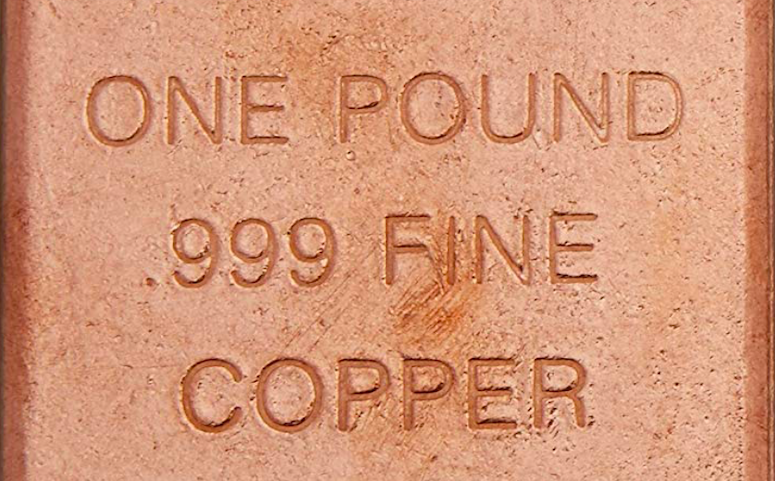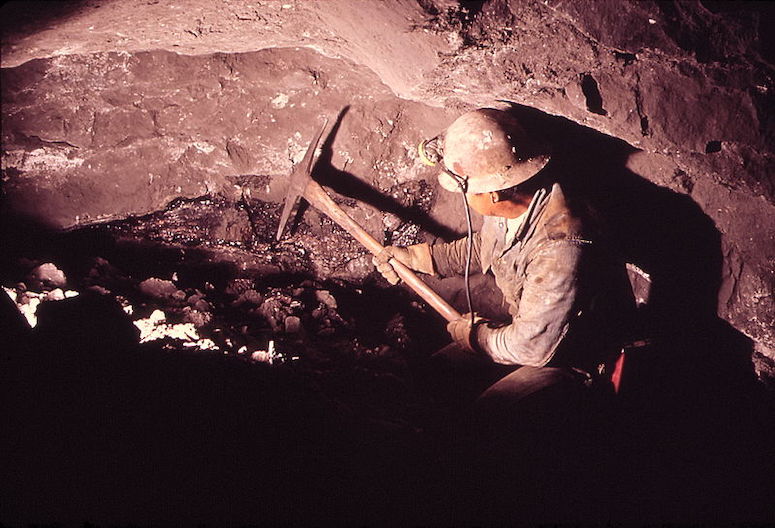
Nearly all prospectors focus their efforts on precious metals. Gold, silver and platinum get the most attention simply because they are so valuable. They are valued in ounces. You could buy a nice home with a big double handful of gold or platinum.
Base metals are valued differently, most often market priced by the pound or ton. Few people dream of striking it rich as a tin miner… the precious metals get all the attention!
But men have made fortunes mining for some of these “less exciting” metals. In fact, each of these base metals have their place in our economy, and are valued on the world market for a wide variety of human needs.
1. Aluminium
Most people know aluminum as a common metal used to make soda cans and other lightweight applications like aircraft components. It is not found in native form, but rather is extracted from bauxite ores. Commercial deposits have been mined in Alabama, Arkansas and Georgia, but the amount of aluminum produced in the USA accounts for less that 0.1% of the world production. About 1/2 of the smelting here comes from post-consumer recycling.
2. Chromium
Chromite specimens are occasionally found in crystalline form and are worth a premium to mineral collectors, but most of the chromium production comes from ores. This metal is well-known and commonly used for chrome plating on vehicles and other decorative applications. It resists corrosion and oxidation. Chromium has been found in Oregon, California, New York, North Carolina and Maryland, but it is not being actively mined in the USA right now.
3. Copper
Copper has been mined extensively and still is today. It is commonly associated with ores that also produce silver and gold as byproduct metals. Some of the richest copper deposits on Earth are found in Arizona, Michigan and Montana. For the casual prospector, the copper in Michigan might be of special interest because it is often found in the form of nuggets and crystalline specimens. Large pieces worth thousands of dollars can still be found using even a basic metal detector in some areas of Michigan.
4. Iron
Iron is generally mined from hematite ores. Native iron specimens are collectable but also very rare. Ores can be identified by their dark color and a very high specific gravity that weighs heavily in your hand. The biggest ore bodies in the USA are found in Michigan and Minnesota around Lake Superior in the Mesabi Range. Lesser iron deposits have recently been mined in Utah. At one time this country made up almost 1/3 of the total iron production on Earth, but today we only produce around 2%.
5. Lead
Lead and silver are commonly mined together from the same types of galena ore. It is easily identified out in the field by its softness, which can easily be scratch or flattened. At one time lead mining was common throughout the country, but now only a few areas are producing commercial quantities of the metal. The Coeur d’ Alene region of northern Idaho is still the primary lead/silver district in the USA.
6. Manganese
Manganese does not occur as a native metal but it is important as an alloy to harden other metals like aluminum and steel. It has other uses in fertilizer and batteries. The US imports most of the manganese since most of the deposits in this country are of lower grade. Some of the largest reserves of this metal are found in Arizona, Arkansas, South Dakota, Minnesota and Maine.
7. Mercury
Mercury is easy to identify because it is the only metal that is in a liquid form (unless frozen to -40 degrees). Its primary ore is cinnabar, which is abundant in many locations and easily identified by its deep brick red coloration. It has a wide variety of uses, but many gold panners are familiar with its ability to separate out fine gold from black sands through the amalgamation process. Mercury is a known neurotoxin and should be handled with great care.
8. Molybdenum
This is a silvery/white metal that occurs in ores that are often confused with lead. It is a very abundant metal that has a wide variety of different uses. Perhaps the most important use is in high-grade tool steel, stainless steel, and cast iron. It is a relatively abundant mineral in the Earth’s crust. In the United States, there are several large molybdenum mines in Colorado. The Bingham Copper Mine in Utah also produces a significant amount as a byproduct. Commercial deposits have been found in most of the western states.
9. Nickel
Nickel is another silvery metal that is relatively abundant worldwide. In the US there have only been a few mineable nickel deposits, one in Oregon and another in Michigan. The Eagle Mine Project in Michigan’s Upper Peninsula just recently came into production and is currently the only US mine primarily focused on nickel production. This is an inexpensive metal with a wide variety of uses, but most commonly known for its use in coinage minted around the world.

10. Tin
Tin is a highly valued metal for a variety of needs. The most well-known is its use in bronze (1/8 tin, 7/8 copper) where it has been used for thousands of years. Perhaps less well-known is that it is a critical component of solder needed for joining pipes and other industrial applications. It remains a very important metal for todays modern world. Miners most commonly extract tin from cassiterite ores. There are no active mines producing tin right now in the US, but reserves of the metal are most abundant in Alaska.
11. Titanium
Ilmenite and rutile are primary ores that titanium is extracted from. There are several potential areas within the USA where the metal could be mined in economic quantities, primarily on the East Coast. Sands containing titanium have been mined in Florida, Georgia, and Virginia. It is probably best known for its impressive weight-to-strength ratio, which makes it a great metal for use in aircraft and space travel. Perhaps more surprising is that the vast majority of titanium is used in chemical compounds to make “whites whiter” in products such as paint, sunscreen, paper and plastics.
12. Tungsten
This metal has been mined quite extensively throughout the United States since the late 1800s. Most the states west of the Rocky Mountains have had large tungsten mines in operation. Lesser deposits have also been identified in many states throughout the Midwest and east coast as well. A drop in prices in the 1980 closed most of the active mines in the US. Tungsten has a higher melting point than most other metals which makes it an important metal for constructing equipment for high temperature applications.
13. Zinc
Inc is widely used in galvanized metal to prevent corrosion and wear. It is not found as a native ore, but most often occurs with lead and silver ore deposits. The largest producer in the US is the Red Dog Mine in Northern Alaska, which accounted for nearly 5% of the world’s zinc production. Other important zinc ores have been identified in Idaho, Kansas, Missouri, Oklahoma, Tennessee, Virginia, and Washington.
Next: Metal Detecting Mine Dumps for Hard Rock Gold
